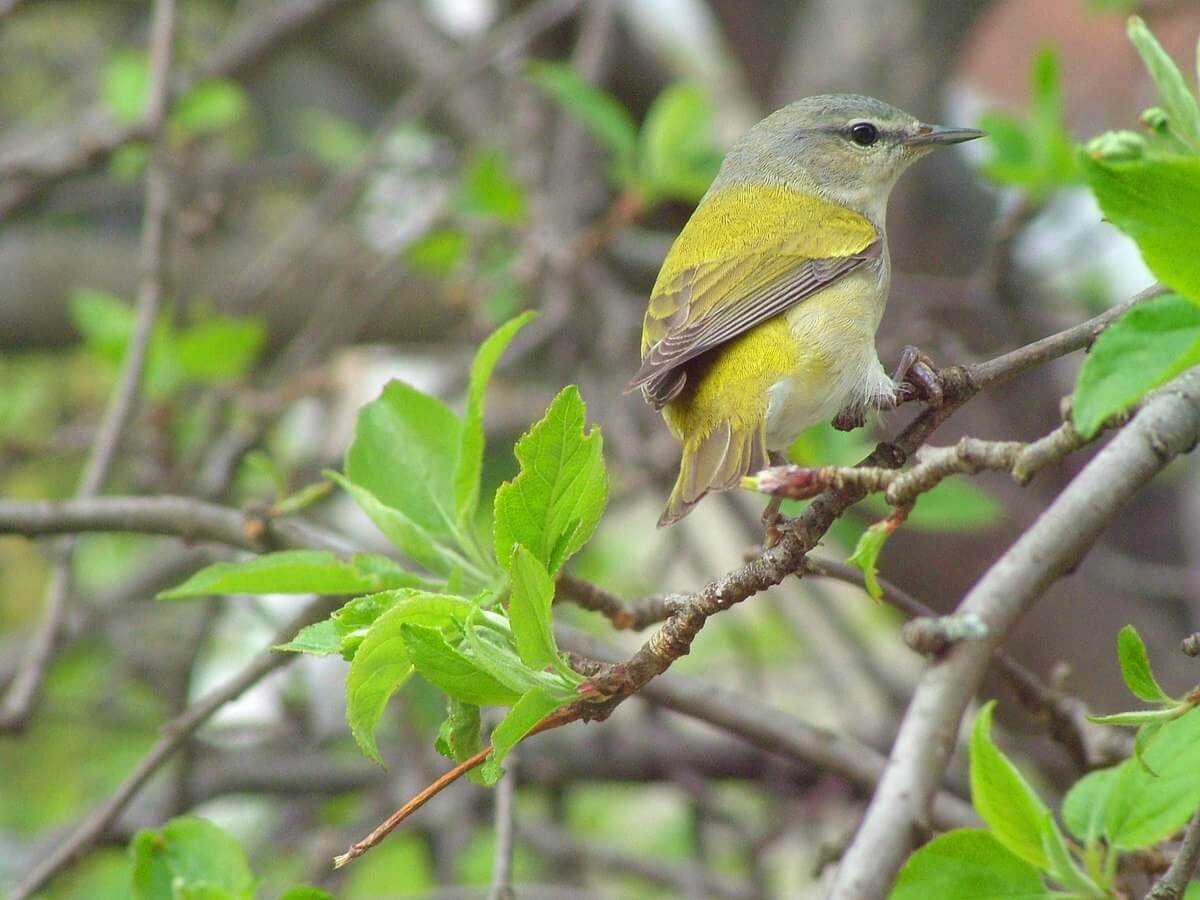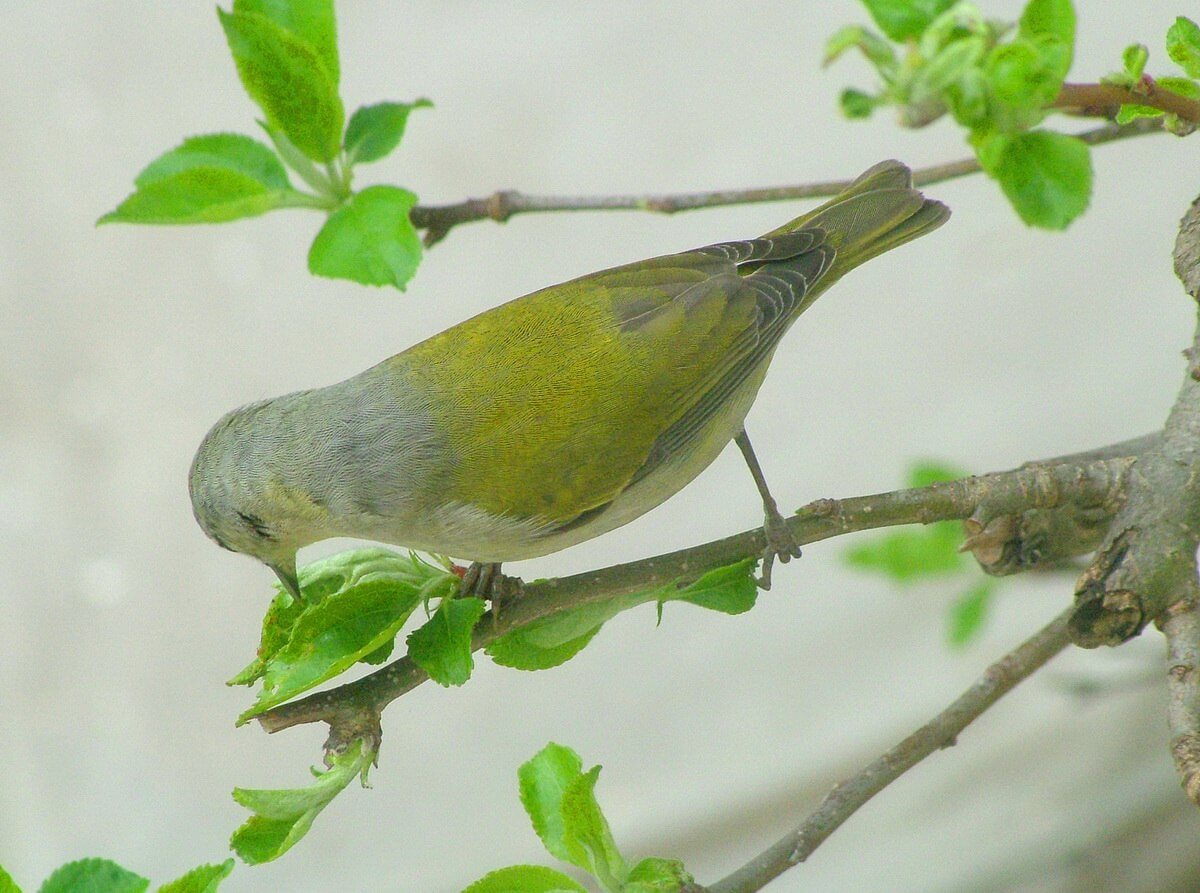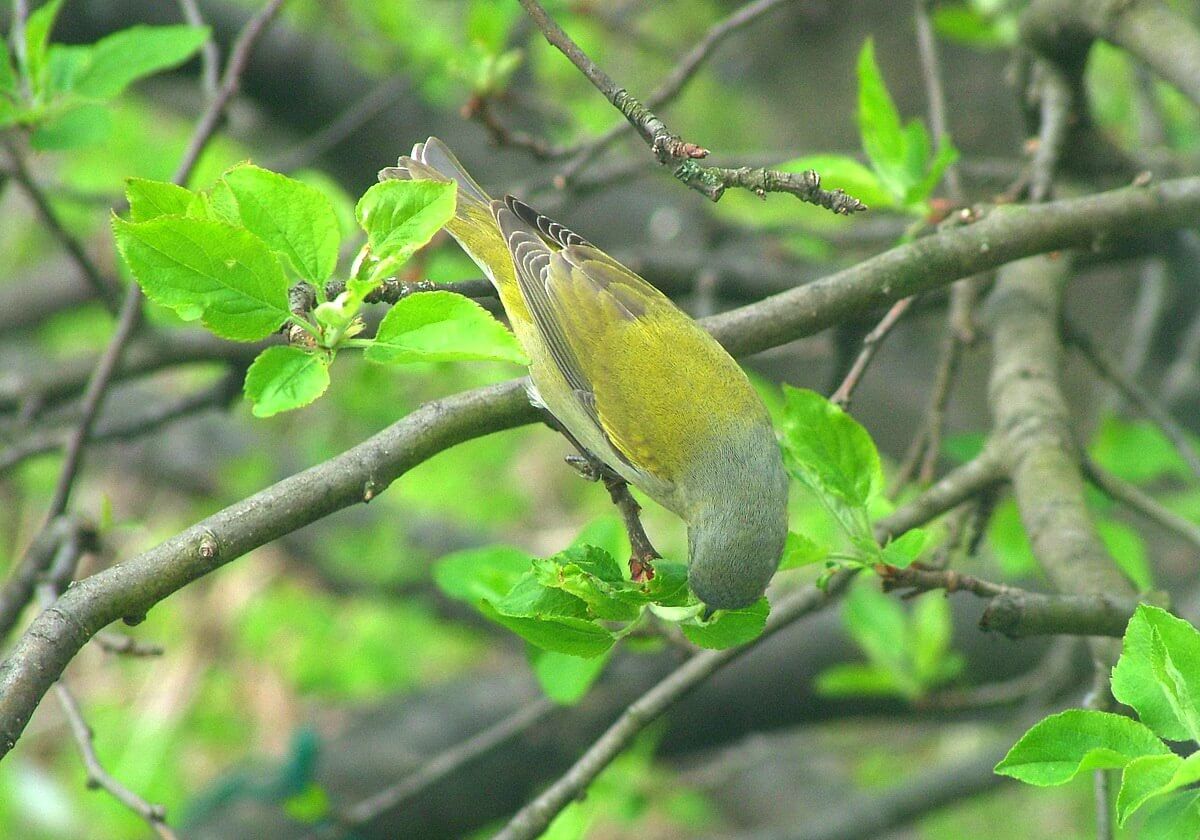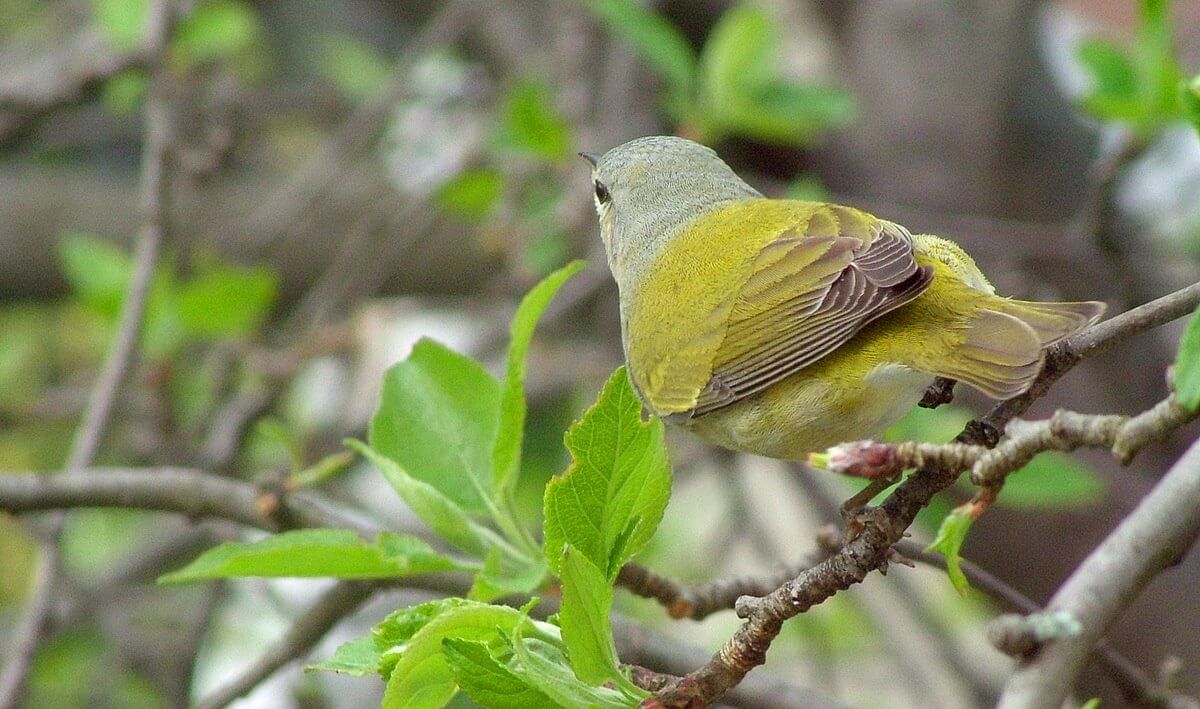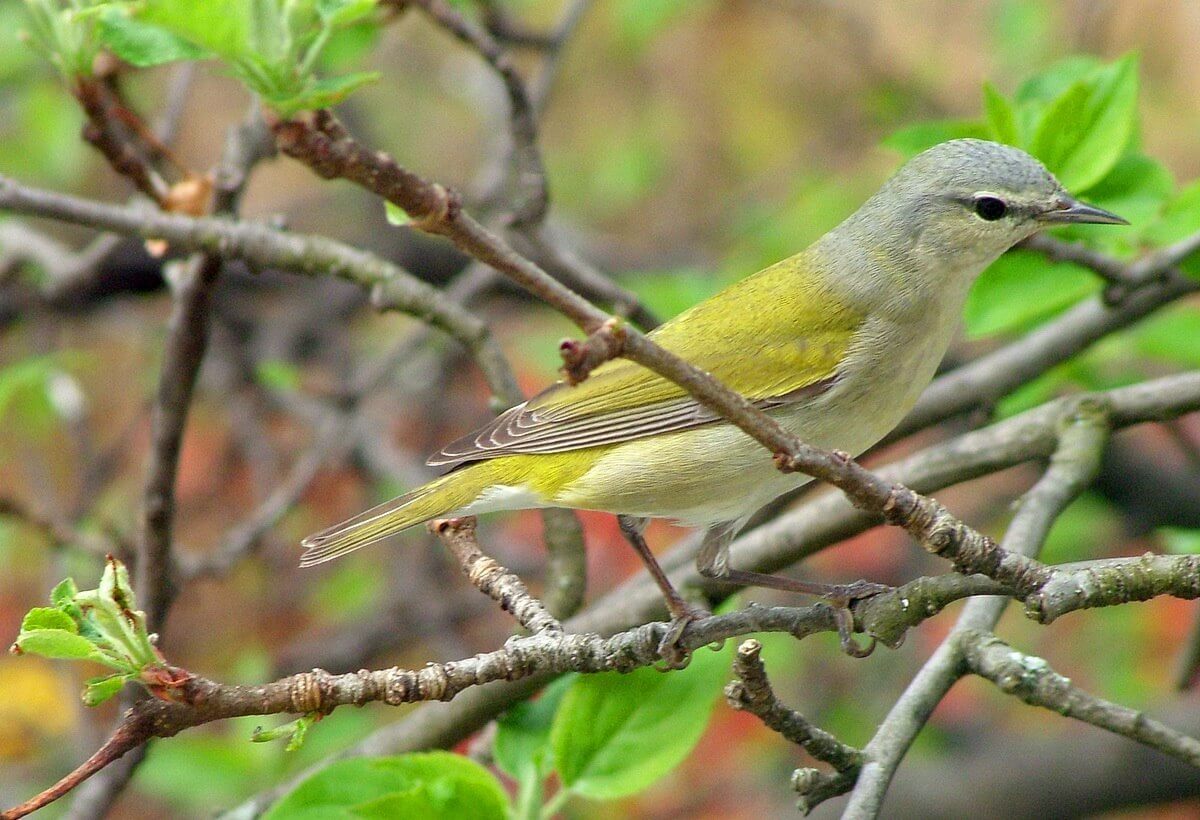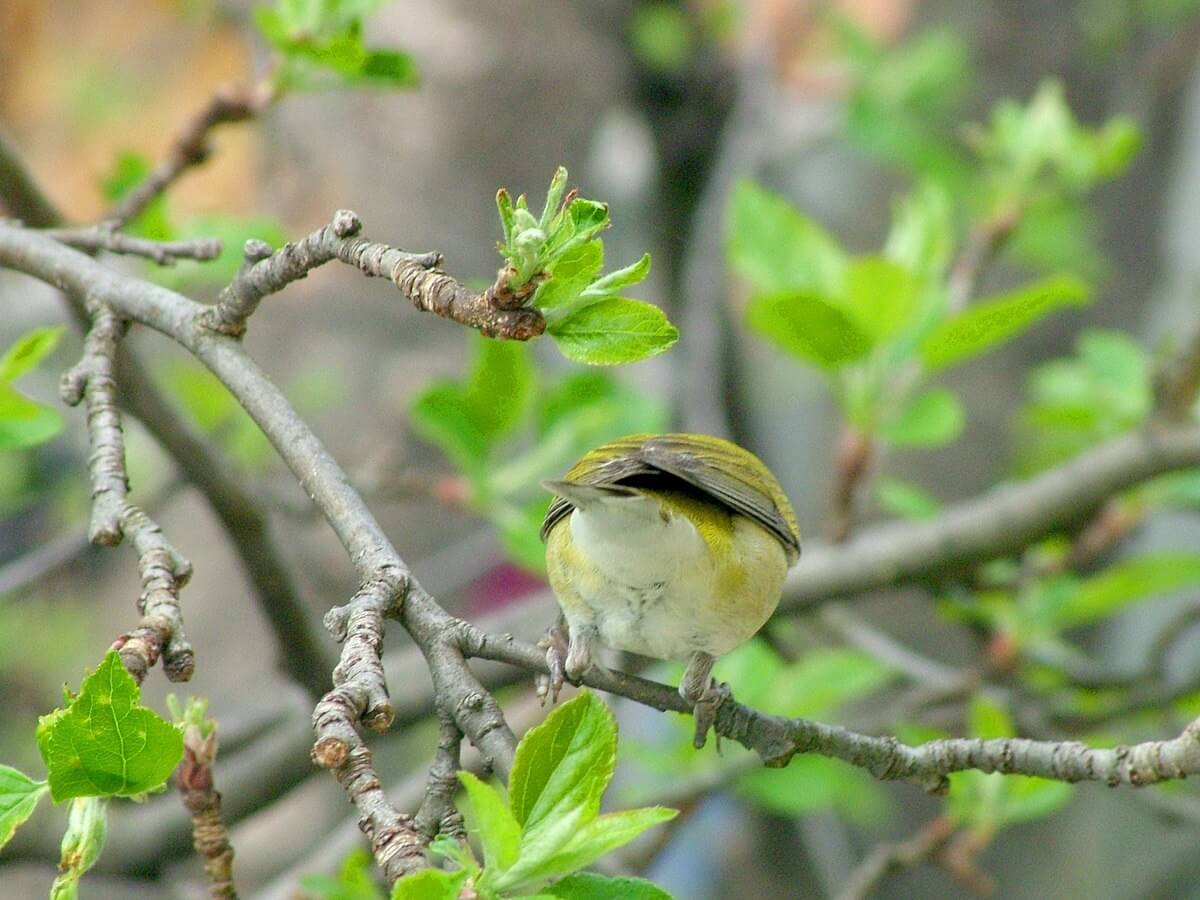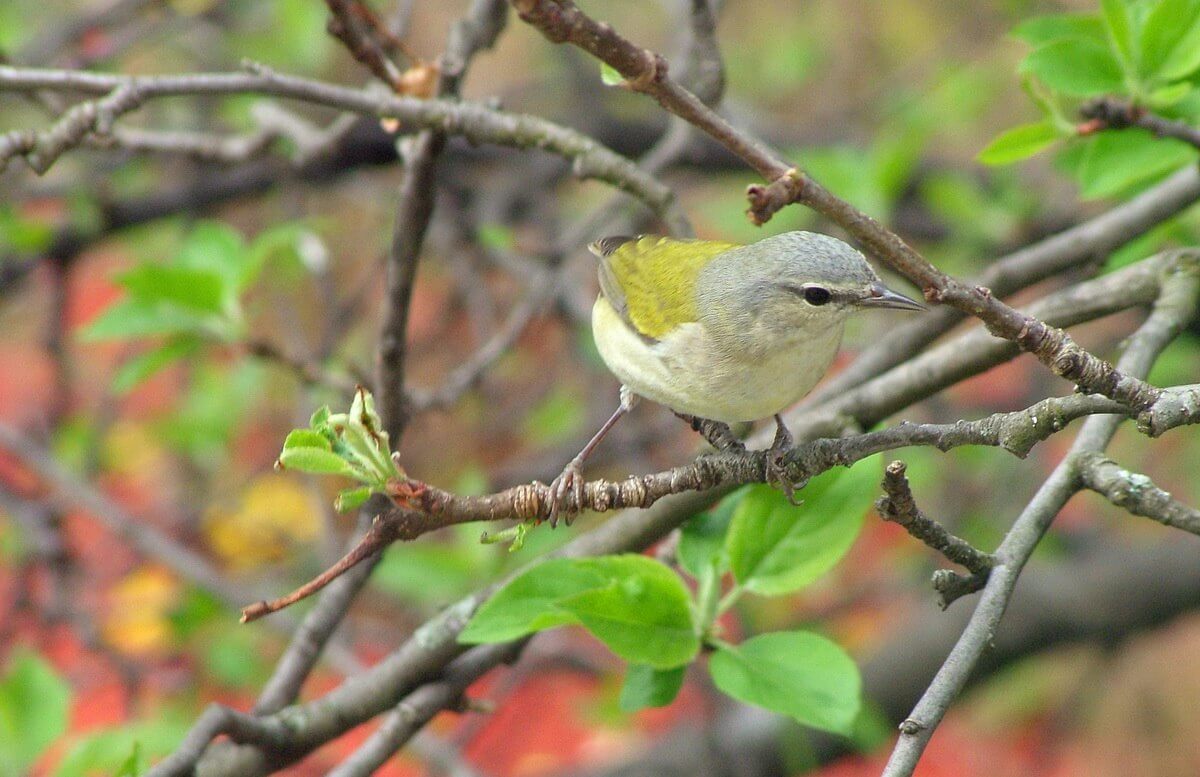Tennessee Warbler In My Toronto Backyard
Earlier one spring, Bob and I found ourselves unable to keep up with the bird sightings even in our own backyard. Such was the case the day I spotted this Tennessee Warbler (Oreothlypis peregrina). I had been kept busy at the kitchen window that morning, taking photographs of a House Wren and Magnolia Warbler, when another flash of yellow drew my attention to the crabapple tree beside our deck.
For the whole month of May, my camera and binoculars stood at the ready on the kitchen counter, so I grabbed the camera, and in one foul swoop, turned it on, set it for multiple images and began to focus. Unfortunately, the bird had just flown into the upper story of the tree, so I rushed upstairs to the bedroom where I was able to capture this little fellow sitting right next to the window. Of course, the photos had to be taken through the glass for to open the window would have frightened the bird away.
When male Tennessee Warblers are in breeding plumage, the forehead, top of the head and back of the neck are a bluish grey, as seen here. These birds could easily be confused with others warblers, such as Philadelphia, Red-eyed or Warbling, but the slender, sharp-pointed bill and fast movements serve to differentiate the species.
For the few brief moments afforded to me for observation, the Tennessee Warbler frenetically moved about the twigs and branches next to the window picking insects from the yet unfurled leaves. Their preferred food is Spruce Budworm, so the species thrives in years when budworm numbers are on the rise, but these warblers also eat nectar and fruit. With their sharp, pointed bills, they contentedly pierce ripe grapes to access the juice within, and they will also poke a hole in the base of a flower to sip the nectar. A surprising component of their diet is sumac seeds and poison ivy berries.
When Spruce Budworm is not available, Tennessee Warblers make a choice of other insects, everything from beetles and caterpillars, grasshoppers and weevils, to aphids and spiders. Their quick movements make them adept at catching flies, which is often done from the end of a branch where they hang like a titmouse. Viewing this Tennessee Warbler from behind showcases the bright olive-green plumage of the back, wings and rump, as well as the dark grey wing feathers and tail. It is such a dainty little warbler measuring between 4-5 inches (10-12.5 cm) long.
The breeding range for this species is said to include the northern United States and southern Canada, and yet they breed almost entirely in Canada’s boreal forest. It is no surprise, then, that these birds prefer coniferous forests or mixed forests where conifers are found.
These overly active warblers, like all warbler species, are difficult to photograph or view because they are always in motion. No sooner do they snatch an insect but that they take a cursory look around and remove themselves to another perch. On more than one occasion, I have been able to photograph birds when they perch in my crabapple tree. I can pretty much put my face right up to the window, and the birds appear not to notice.
Tennessee Warblers migrate some 1,400 miles (2,253 km) to their wintering grounds that cover an area from the south of Mexico through Central America to Colombia. There, they prefer to inhabit second growth forests and agricultural lands such as those found on shade coffee plantations. A more appropriate name for this species would be Coffee Warbler but instead, its alternate name is Tennessee Swamp Warbler even though the birds are only ever seen in Tennessee during migration.
The white eyestripe above a less well-defined dusky streak through the eye is a another defining feature of a Tennessee Warbler. Both females and males look very much alike, with the females’ plumage appearing only less brightly coloured. Bob and I were thrilled to have this visitor to our property even though its stay was short. It is good to know that the populations of this warbler are strong, but through the loss of habitat, as trees are cut down in both the boreal forests and on the coffee farms, their survival is being threatened. At least, for the present, there is no decline in their numbers.
Frame To Frame – Bob and Jean

